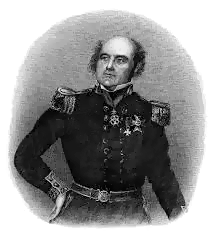News about maps
Digital cartography and GPS navigation
Mapstor news
This Day in History
Travelling with mapstor.com
This Day in History
4th December, 1674 Marquette founded the first European settlement
19th November, 1875 was born Hiram Bingham
18th November, 1832 was born Nils Adolf Erik Nordenskiöld
14th November, 1963 the island Surtsey was founded
11th November, 1729 was born Louis Antoine comte de Bougainville
19th May, 1845 started the ill-fated expedition of John Franklin
 On the 19th of May, 1845 from English town Greenheight started Arctic expedition under the command of John Franklin. Final expedition was sad: the crew, consisting of 24 officers and 110 sailors, was not to come back.
On the 19th of May, 1845 from English town Greenheight started Arctic expedition under the command of John Franklin. Final expedition was sad: the crew, consisting of 24 officers and 110 sailors, was not to come back.
By the time of sailing John Franklin was 59, he participated in three Arctic researches, in two of which he was a commander. However, aside from Franklin, Francis Goat and two pilots, no one else had polar experience.
The goal of the research was to study the unexplored region of the Northwest Passage. Note that for 1845 was undertaken numerous expeditions that made it possible to draw a map of the Canadian Arctic. However, on this map remained blank about 181 300km², which Franklin had to explore.
Leaving from England, sailors came to Stromness harbor (Orneyskie Islands , Scotland), and then moved to Greenland. They were last seen in the 1845 by crews of whaling ships that met the researchers in Baffin Bay, when they waited for the moment to go through Lancaster Sound. According to the map of the expedition, they had to go through the strait, and then, avoiding ice and land, overcome the Northwest Passage.
What happened to the crew then is unknown. Over the next 150 years, scientists have tried to find out the fate of the sailors. The experts found that in the period from 1845 to 1846 they were on Beechey Island and in 1846 - 1848 on King William Island. According to the map, you can find that it is one of the islands of the Canadian Arctic Archipelago. In 1846 not far from this island, expedition ships were trapped in the ice and never went to sea. In April 1848 mariners planned to move to the river tank. By that time John Franklin was dead, also another 15 sailors and 9 officers died. Other crew members died on the way, and only a group of 35 people could get to the northern part of the continent, but was also buried in the Arctic ice.
In 1854 explorer John Rae conducted topographic survey of Islands King William on Boothia Peninsula. He was able to communicate with the Eskimos, who told him about the missing expedition. According to local residents, a group of 30-40 white people died of starvation. They also told that among the dying sailors occurred fact of cannibalism.
Experts believe that the death of the crew led to a combination of adverse factors such as cold and hunger, tuberculosis, scurvy and pneumonia.
Despite of the tragic outcome of the expedition John Franklin in 1852 was posthumously awarded the rank of rear admiral.
This Day in History 19-05-2014


